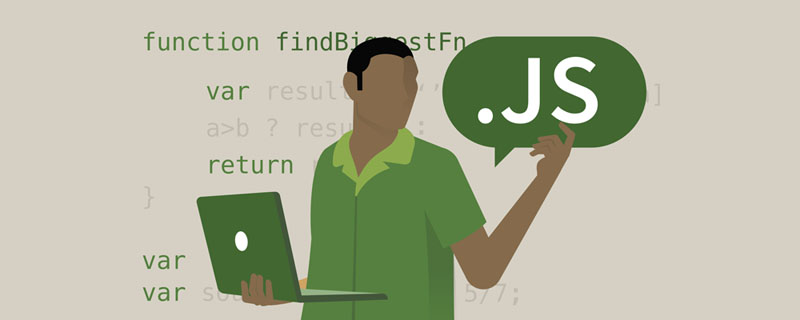Home >Web Front-end >JS Tutorial >One article to understand the singleton pattern in JavaScript
One article to understand the singleton pattern in JavaScript
- 青灯夜游forward
- 2023-04-25 19:53:112804browse
JS singleton pattern is a commonly used design pattern, which can ensure that a class has only one instance. This mode is mainly used to manage global variables to avoid naming conflicts and repeated loading. It can also reduce memory usage and improve code maintainability and scalability.

Value Scenario
JS singleton mode is usually suitable for the following scenarios:
Manage global Variable
Using singleton mode can avoid naming conflicts and repeated loading of global variables, and can also better manage global variables, making the code more maintainable and scalable. For example, we can use the singleton mode to manage global data such as page configuration information and user login status. [Recommended learning: javascript video tutorial]
Implementing a unique object
In some scenarios, we need to ensure that there is only one instance of an object. For example, when we need to manage an asynchronous request queue, we can use the singleton mode to ensure that the queue has only one instance, avoiding repeated submission of requests or multiple creation of instances, thus improving the reliability and performance of the code.
Management of system resources
In some applications, we need to use system resources to handle some tasks. For example, when we need to print a large number of reports, we can use the singleton mode to manage the print queue to avoid excessive waste of system resources and improve printing efficiency.
Modular development
In modular development, we usually need to encapsulate some functions so that these functions can be reused by other modules. Using the singleton mode can facilitate us to encapsulate and manage these functions, avoid interface conflicts with other modules, and improve the maintainability and scalability of the code.
In short, the JS singleton pattern is suitable for many scenarios. It can help us better organize the code and improve the readability and maintainability of the code. If you haven't used the singleton pattern yet, give it a try. I believe you will find its value.
Implementation methods
There are many ways to implement JS singleton mode. Here are some commonly used methods.
Object literal
Object literal is a simple way to easily create a singleton object. For example:
const singleton = {
prop: 'value',
method() {
console.log(this.prop);
}
};In this way, we can directly access the singleton object without creating a new instance. The disadvantage of this approach is that object-oriented features such as constructors and inheritance are not available.
Constructor
The constructor is a more flexible way to create an instance through the new keyword. For example:
function Singleton() {
if (Singleton.instance) {
return Singleton.instance;
}
Singleton.instance = this;
this.prop = 'value';
}In this example, we first check whether an instance of the Singleton class already exists. If so, return the instance directly; otherwise, create a new instance and save it in the static variable Singleton .instance for next time use.
Class method
The following is an example of using class to implement the singleton pattern.
class Singleton {
constructor() {
if (Singleton.instance) {
return Singleton.instance;
}
Singleton.instance = this;
this.prop = 'value';
}
method() {
console.log(this.prop);
}
}
const instance1 = new Singleton();
const instance2 = new Singleton();
console.log(instance1 === instance2); // trueIn the above example, we used the class keyword to define a Singleton class, which has only one constructor. In the constructor, we check whether an instance already exists, and if so, return the instance; otherwise, create a new instance and save it in the static variable Singleton.instance. At the same time, we also define a method method to demonstrate how to access and operate the properties and methods of a singleton object.
Finally, we created two instances instance1 and instance2 respectively. By comparing their reference addresses, we can find that they are the same object. This proves that our singleton pattern implementation is correct.
In short, using the class method to implement the singleton mode is also a common method, which can improve the readability and maintainability of the code. If you are familiar with the use of classes, you can also try to use this method to implement the singleton pattern.
Summary
No matter which way, the benefits of JS singleton pattern are obvious. It can help us manage global variables, avoid naming conflicts and repeated loading, and improve the maintainability and scalability of the code. At the same time, it can also reduce memory usage and improve code performance.
In short, the JS singleton pattern is a very useful design pattern, which can help us better organize the code and improve the readability and maintainability of the code. If you haven't used this mode yet, try it. I believe you will fall in love with its simplicity and practicality.
For more programming-related knowledge, please visit: Programming Teaching! !
The above is the detailed content of One article to understand the singleton pattern in JavaScript. For more information, please follow other related articles on the PHP Chinese website!

